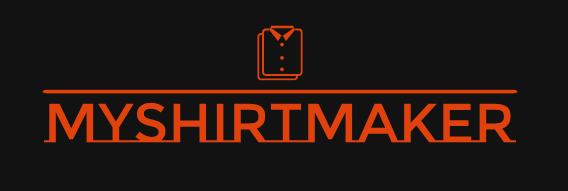Grunge Takes the Stage

The 1990s saw the rise of the grunge movement, a rebellious departure from the polished and extravagant looks of the 80s. Grunge fashion was all about oversized flannel shirts, ripped jeans, and combat boots. It emerged from the Seattle music scene, with bands like Nirvana and Pearl Jam leading the way. The essence of grunge was its effortless, almost careless vibe—like you just rolled out of bed and threw on whatever was lying around. This style was the antithesis of fashion for fashion’s sake, prioritizing comfort and individuality over mainstream trends.
The Minimalist Wave
While grunge was making waves, minimalism also found its place in the 90s fashion landscape. This trend was characterized by simple, clean lines and a monochromatic palette. Designers like Calvin Klein and Jil Sander became icons of this movement, creating pieces that were sleek, understated, and timeless. The minimalist look often featured slip dresses, tailored suits, and basic tees. It was a refreshing contrast to the loud patterns and bold colors that had dominated the previous decade. Minimalism in the 90s was all about sophistication through simplicity.
The Rise of Hip-Hop Fashion
Hip-hop culture exploded in the 90s, and with it came a distinct fashion style that left a lasting impact. Baggy jeans, oversized t-shirts, and tracksuits became staples of the hip-hop wardrobe. Brands like FUBU, Cross Colours, and Karl Kani were at the forefront, designing clothes that resonated with the youth. Accessories played a huge role too—snapback caps, gold chains, and high-top sneakers were must-haves. This fashion movement wasn’t just about the clothes; it was about making a statement, expressing identity, and showcasing a sense of pride and confidence.
The Influence of Pop Culture Icons
The 90s were a golden era for pop culture, with numerous icons shaping fashion trends. TV shows like “Friends” and “The Fresh Prince of Bel-Air” introduced viewers to new styles every week. Rachel Green’s (Jennifer Aniston) haircuts and outfits on “Friends” became legendary, influencing everyday fashion. Meanwhile, Will Smith’s bold and colorful attire in “The Fresh Prince of Bel-Air” brought a fun, playful element to streetwear. Music videos were another major influence, with artists like Britney Spears, TLC, and the Spice Girls setting trends that fans eagerly followed.
The Return of Retro
Nostalgia played a significant role in 90s fashion, with many trends from previous decades making a comeback. The 70s saw a revival with bell-bottom jeans, platform shoes, and tie-dye shirts finding their way back into wardrobes. The 60s also made an appearance with mod-style mini skirts and go-go boots. This blend of past and present created a unique fashion tapestry, where old favorites were reinvented with a contemporary twist. Vintage shopping became popular as people sought out authentic pieces from earlier eras to mix into their 90s outfits.
Athletic Aesthetics
The 90s was a decade where athletic wear transitioned from the gym to the streets. Brands like Nike, Adidas, and Reebok capitalized on this trend, creating stylish and functional sportswear that could be worn casually. Tracksuits, windbreakers, and sneakers were not just for athletes; they became everyday wear for many. The athletic aesthetic was about comfort and functionality, but it also carried an element of coolness. This trend paved the way for today’s athleisure movement, where the lines between sportswear and fashion continue to blur.
Bold Patterns and Colors
Despite the rise of minimalism, the 90s were not devoid of bold fashion statements. Bright colors, geometric patterns, and eclectic prints were everywhere. From neon windbreakers to patterned leggings, the decade embraced a playful approach to fashion. Designers like Versace and Moschino were known for their vibrant, daring designs that often featured clashing patterns and unexpected color combinations. This fearless approach to fashion allowed for a great deal of creativity and self-expression, encouraging people to step out of their comfort zones and try something new.
Denim Domination
Denim was a massive trend in the 90s, and it came in every form imaginable. Denim jackets, skirts, overalls, and, of course, jeans were wardrobe staples. The decade saw the rise of various denim styles, from high-waisted “mom jeans” to low-rise jeans and everything in between. Brands like Levi’s and Wrangler were household names, but designer denim also became popular. The double denim look, once considered a fashion faux pas, was embraced wholeheartedly. Denim’s versatility and durability made it a favorite, and it remains a cornerstone of casual fashion to this day.
The Goth Revival
The goth subculture experienced a revival in the 90s, bringing dark, moody fashion into the mainstream. This style was characterized by black clothing, lace, leather, and dramatic accessories like chokers and platform boots. Bands like The Cure and Marilyn Manson influenced this look, which was both edgy and romantic. Goth fashion allowed for a high degree of personalization, with many followers mixing vintage pieces with contemporary designs to create unique, hauntingly beautiful outfits. The 90s goth revival added a layer of depth and diversity to the decade’s fashion scene.
Teen Spirit
Teenagers in the 90s had a huge influence on fashion, with many trends originating from youth culture. The rise of teen-centric shows and movies, like “Clueless” and “Beverly Hills, 90210,” showcased styles that quickly became popular. Plaid skirts, crop tops, and knee-high socks were just some of the items that defined teen fashion. The concept of “junior” lines from major fashion brands emerged, targeting this influential demographic. Teen spirit in fashion was about experimenting, having fun, and finding one’s personal style in a decade rich with diverse trends.







